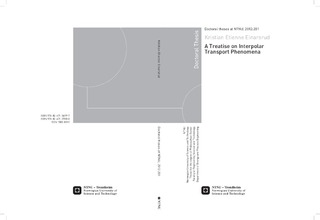| dc.description.abstract | This thesis contributes to the understanding of mechanisms for mass transport in aluminium electrolysis cells. Fundamental studies are undertaken of ow patterns and mass transport in the interpolar region under various operating conditions. A coupled model predicting the turbulent electrolyte ow, under the in uence of both electromagnetism and forces from buoyant gas bubbles, crucial for better prediction of mass transfer mechanisms and voltage oscillations, has been developed from rst principles. The model is validated against experiments performed on a lab scale electrolysis cell. Both modelling and experiments are performed within the scope of this thesis.
Experiments on lab- and industrial scale cells have been conducted in order to study the behaviour of anodic gas bubbles under various operating conditions. On industrial scale, bubble related signals show typical frequencies in the range 0.5 to 2 Hz, with amplitudes up to 5% around the mean voltage. Results indicate that the bubble related voltage oscillations increase in both frequency and magnitude with increasing anode age, the latter of which due to the diminishing in uence of slots. No signi cant correlation between anode pairs is identi ed, suggesting that models treating individual anodes are meaningful also on an industrial scale.
Due to challenges related to multiple simultaneous phenomena occurring on industrial scales, a series of lab scale measurements have been performed, in order to obtain quantitative data for model validation. The lab scale experimental cell allowed for di erent current densities, interpolar distances and inclination angles, thus spanning ranges typically encountered on the industrial scale. Lab scale frequencies are found to be in the range 0.25 to 0.65 Hz, with magnitude of up to 4% around the mean voltage. The magnitude of the oscillations decreases with increasing anode age, due to increased rounding of the initially sharp anode edges.
The traditional voltage measurements have been supplied with high-speed video recordings of the bath surface showing a good correspondence between voltage uctuations and escaping gas bubbles. On average, 0.5 and 2 bubbles were observed per second on lab and industrial scales, respectively, signi cantly higher than frequencies obtained by a FFT of the voltage signal. It is shown that this discrepancy can be due to large variations in the bubble release times, thus violating the assumption of a periodic signal required for an FFT. For industrial anodes, the possibility of overlapping bubbles is investigated as an alternative e ect resulting in the mismatch between observed and calculated frequencies.
A phenomenological, coupled, model for the creation and transport of anodic gas bubbles is developed from rst principles. The proposed model is a multiscale approach in which molecular species are produced by Faraday's law and transported by di usion and advection through a supersaturated electrolyte. Sub grid bubbles are allowed to form through nucleation on the anode surface and the resulting bubble population evolves through mass transfer and coalescence. As sub grid bubbles reach a certain size they are transferred to a macroscopic phase which evolution is governed by the volume of uid method, thus allowing for the treatment of complex bubble topology.
The model is validated against results from the lab scale experiments in a 2D model, showing that essential features of the voltage signal can be reproduced by the proposed approach. The in uence of various parameters such as bath properties, anode microstructure and mass transfer properties are investigated by means of a factorial design analysis. The factorial design indicates that the contact angle, Sherwood number (and molecular di usivity) and the porosity of the anode that have the most signi cant in uence on the frequencies of the resulting bubble induced voltage uctuations. Furthermore, resulting frequencies appear to be dominated by these selected factors, as coupling is present only at low signi cance. Considering the amplitude of the signal, the dominating factors are the bath viscosity, contact angle and pore diameter. Although the in uence of these factors is large, signi cant coupling between factors is observed, indicating that the physics determining the amplitude of the signal is of a more complex nature than that of the frequencies. The mean voltage is relatively insensitive to the factors studied in this analysis.
Simulations are able to reproduce the essential behaviour found experimentally on the lab scale cell, that is: increasing frequencies with increasing current densities and anode inclination, increasing amplitudes with decreasing anode inclination and increasing current densities and nally increasing mean voltages with increasing ACD and current density.
Considering individual bubbles, the in uence of electromagnetic forces is small when compared to other forces such as buoyancy and surface tension. However, when considering the system as a whole, the Lorentz forces are found to yield enhanced gas departure rates due to favourable pressure gradients in the bath. This feature is necessarily enhanced further by the signi cantly elevated current densities found in the proximity of large bubbles, as the in uence of the Lorentz forces is found to increase with increasing current densities.
Simulations indicate that steady state bubble production on the anode does not imply a direct transfer of all the molecular gas to bubbles. Instead, a balance between bubble production and transport by di usion and advection away from the anode appears to describe this state, resulting in a CO2 supersaturated region greatly extending the bubble layer. The presence of a CO2 enriched region yields a possible explanation to the observed reduction of current eciency if the anode-cathode distance is reduced beyond a critical limit. | nb_NO |
